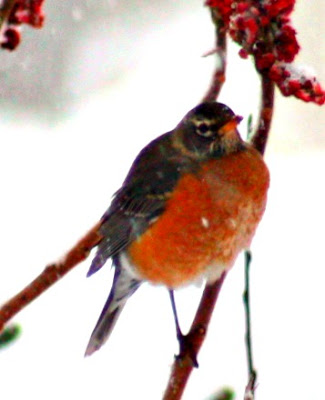Sue Sinclair & Kerry-Lee Powell, A Poetry Reading
“It took six years to write this poem.”
That’s what Sue Sinclair said about one of her poems, at a recent Poetry Reading held at Folio Books. The book store, located at the corner of Botsford Street and St. George Street in Moncton, NB, has become the setting for monthly readings in the Attic Owl Reading Series. Last week’s reading featured two Canadian-born poets, Sue Sinclair and Kerry-Lee Powell.
Sue finished reading a poem (the six-year one) from her “Exercises in Beauty”, an unpublished series which had grown from her work in philosophy. It was a poem about death, and yet it wasn’t. After she read, I had goose bumps and a shivering sense of the truth of her words.
Sue Sinclair read other poems.
From Breaker (Brick Books, 2008), a poem called In Spring, When the Earth:
…The obstacles
to happiness, the things that weigh on us and demand
we lose a little of ourselves to them, are placed just so,
just in our way, so their hold might be greater.
From Mortal Arguments (Brick Books 2003), she read a poem called Dreams:
…
When you wake up, a slight
change inside you. Your suitcase
was searched. Everything’s still there
but shifts
when you pick it up.
After she finished reading Dreams, Sue said that a well-written poem should be like that; reading it should have shifted or changed something inside the reader.
Sue Sinclair’s work has been described as “of shattering intensity, the product of an extraordinary poetic intelligence.” Her work has been nominated for awards including the Gerald Lampert and Pat Lowther awards and the Atlantic Book Prize for Poetry. In 2005, Sue received the International Publisher’s Award for Poetry. Mortal Arguments was a Globe & Mail Top 100 book. In addition to Mortal Arguments, she has published three other books of poetry: Secrets of Weather & Hope, The Drunken Lovely Bird and Breakers. Sue has just completed being Writer-in-Residence at University of New Brunswick for 2011-2012 and is moving to Montreal, Quebec to work and write.
Kerry-Lee Powell read from her work, some of which you can find at http://www.kerryleepowell.ca Among others, she read Family Jewel and Fandango. I was touched by a poem she had written about her father, whose personality had changed completely after being shipwrecked and adrift in the North Atlantic for eleven days. Her poetry was raw and energetic, pulling me along as she read.
Her poem Family Jewel was about being caught stealing an opal ring from a neighbour’s jewellery box.
...Sticky with candy and dirt, it lay tucked
All day in my shorts, cutting a ruby wedge
Into my private parts. Even buried
At home in a basement chest
It caused an itch…
Kerry-Lee’s work has been published in Malahat Review and CV2. She is the 2011 first and second prize winner of the New Quarterly Magazine’s Occasional Verse contest. She currently lives in New Brunswick.
The Folio Book Shop was a welcoming venue with walls of books, stacks of books, towers of books, books on shelves and under glass. The aroma of books, old paper, glue and bindings permeated the shop. Even the books themselves seemed to lean in with respectful recognition of the talent in the room, to enjoy the readings from Sue and Kerry-Lee and to share their love of words.
Following the readings there was a question period. Someone asked how a poet knows when a poem is finished. Sue said, “How do you know when you’re finished making love?” Kerry-Lee said, “You sense a natural stopping place, like bumping up against something solid. It feels complete.” Both poets were gracious and warm with their responses to questions about the writing process.
After the formal part of the reading, the two dozen people in attendance had wine and nibbles and conversation. As I left, I heard people speaking about writing, the length of time it takes and the discipline and solitude it requires.
And, I felt better knowing that sometimes it takes six years to write a poem that produces goose bumps.
The picture of the books is mine. Words in red will take you to another site with additional information if you click on them.



































